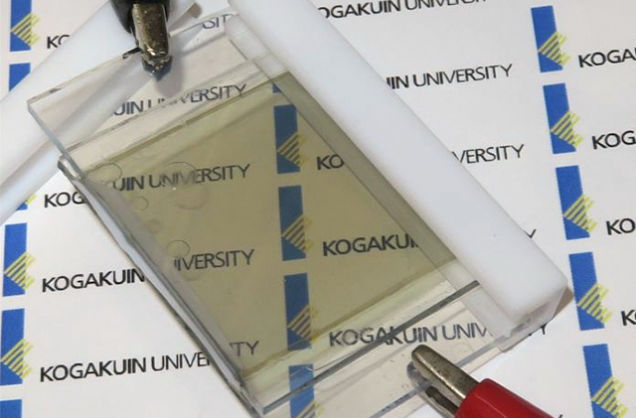
What if I were to tell you that you’ll soon be recharging your phone while using it? What if I were to tell you that a group of Japanese researchers are re-inventing the lithium-ion battery, again? Well heads up, because a new translucent battery will come straight out of Kogakuin University (not Compton) that recharges itself when exposed to sunlight, completely eliminating the need for a separate solar cell.
The sunlight-charging battery is a new take on a translucent battery originally developed in 2013 by the same team of researchers, also led by Mitsunobu Sato, a man who is a professor at the Department of Applied Physics as well as the University’s president. Their initial design featured an electrolyte whose positive electrode was primarily made up of lithium iron phosphate [Li3 Fe2 (PO4 )3 (LFP)], while the electrolyte used for the negative electrode included lithium titanate [Li4 Ti5 O12 (LTO)] and lithium hexafluorophosphate (LiPF6 ) — in and of themselves, commonly used ingredients in Li-ion rechargeable batteries. But in this case, the oxides were nearly transparent while the positive and negative electrodes were only 80nm and 90nm thick.
Two years later, Sato and his team observed that by altering the chemical foundation of the negative electrodes, it became possible to recharge the battery in the presence of sunlight. The output voltage is currently limited to 3.6V, but the team has confirmed a successful 20 charge-discharge cycle.
As the technology improves, the grouped aims to build a highly transparent “smart window” that can serve as a large-area rechargeable battery and a photovoltaic cell with dimming properties on account of the lowered light transmittance that occurs when the density of the lithium changes at the electronic, in addition to the electronic state of the material. Perhaps this will result in auto-dimming car windows or, if we’re lucky smartphone displays that act as an extra battery that absorbs solar energy.
Source Gizmodo via Nikkei Technology
Advertisement
Learn more about Electronic Products Magazine





